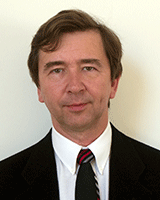Request Username
Can't sign in? Forgot your username?
Enter your email address below and we will send you your username

ASCE Publications: Why Aerospace Engineering?
Wieslaw Binienda: My background is actually in composite materials; those primarily used in Aerospace engineering. These products originally were only used for military applications, but have since been incorporated in everyday civil projects – like bridges. Composites are light, corrosive-free and enable engineers to build lighter, bigger / longer, and stronger. They also are well suited to seismic regions.
Composite materials are a large component of aerospace, and I’ve been able to apply that as editor of this journal.
I am enjoying the challenges of editorship; it’s my way of giving back to the larger civil engineering community.
ASCE Publications: Can you tell us some of the hot topics you are exploring now for the journal?
Wieslaw Binienda: New areas I’d like to see covered in the aerospace engineering field include:
· Moon and Mars mining and settlement
· Launch and low-orbit vehicles
· Exploration programs from NASA
ASCE Publications: What changes have you seen during your time as editor?
Wieslaw Binienda: Today, the Journal of Aerospace Engineering offers its readers more specialized content. We have doubled the number of issues we publish, as well as the number of papers. To make that possible, we’ve recruited more associate editors to assist with the critical peer-review process.
In terms of content evolution:
· controls, robotics and vibrations continue to be important, as well as materials.
· getting closer to building settlements in space,
· simulations are very important; knowing tools will work in different environments,
· commercial space flight has become much more relevant, than say 5-10 years ago,
ASCE Publications: What aspirations do you have for the journal moving forward?
Wieslaw Binienda: As the editor I want to continue to publish high-quality papers that will be cited, help our peers, and ultimately increase the impact of this journal. We scrutinize submissions and make every effort to ensure the content is original. We are particularly careful with international submissions to ensure they aren’t already available in a foreign language.
I am working with symposiums and conferences to attract new authors and submissions. Also we plan to collaborate with other relevant journals including the J. of Cold Regions Engineering. Ultimately, I would like to increase the percentage of domestic papers to have a better balance between international and domestic submissions.
ASCE Publications: Explain some of the challenges facing researchers today.
Wieslaw Binienda: With funding resources drying up, researchers will most likely turn to theoretical work and numerical calculation; rather than experimental work and testing. Knowing that something will work in space is rather important. If researchers turn away from experimental testing for lack of funding, the aerospace community will face serious challenges on how to find real experimental data.
Discussions are also underway to make available to the public all experimental data generated with help of the government grants, but if that comes to pass, experimental researchers may lose control of their data. It’s a big problem!
ASCE Publications: Can you offer any advice to new researchers starting out?
Wieslaw Binienda: Be active, at the university level, but also nationally. Consider joining a professional association and get involved with a committee. Share your work. Be involved in conferences and present papers. Get acquainted with your professional community. Network and grow!
Learn more about contributing to the Journal of Aerospace Engineering.